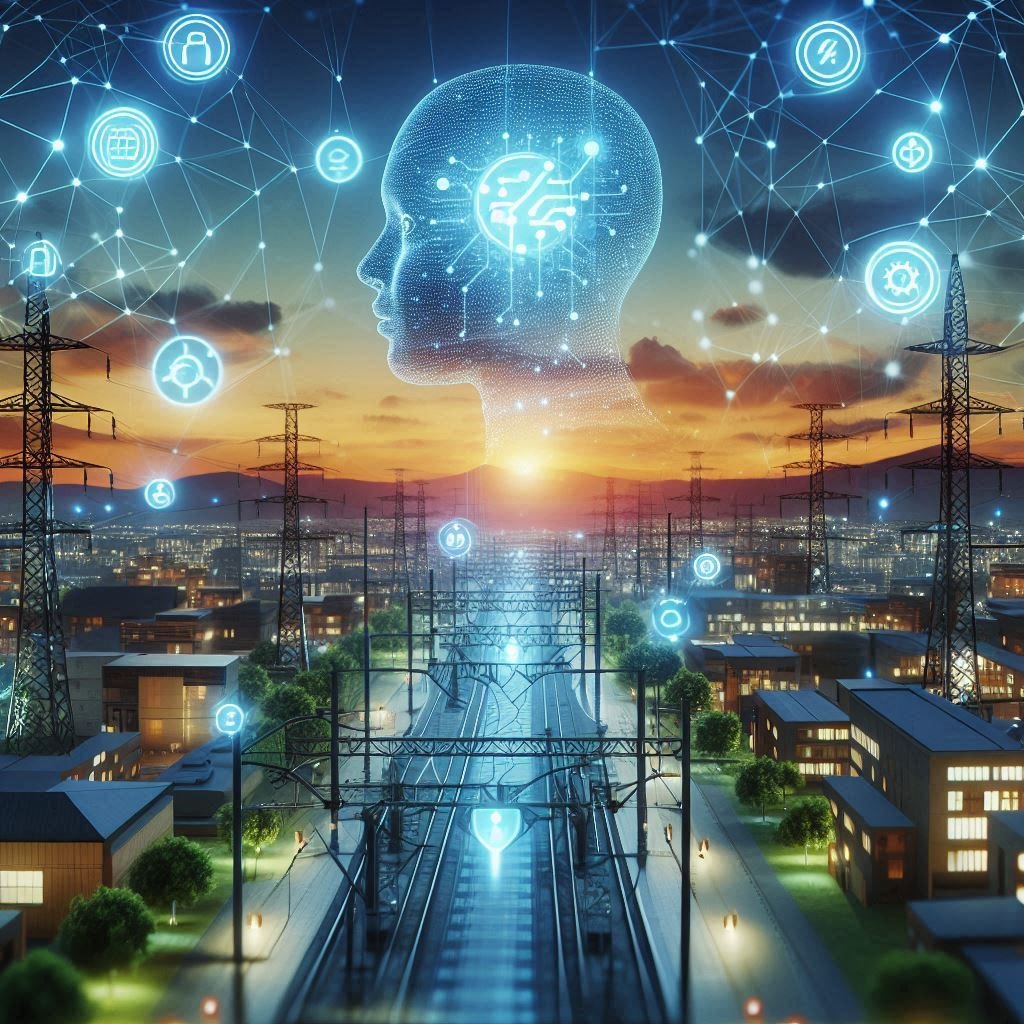AI-Driven & Smart Grids
A smart grid is a network that integrates energy distribution and digital technologies in a two-way flow of electricity and data. Leveraging artificial intelligence in smart grid management creates opportunities for optimized energy processes, predictive maintenance, and efficient demand-side management.
AI-driven predictive analytics can anticipate and mitigate potential grid failures, optimize energy generation and distribution, and enable proactive maintenance strategies, leading to cost savings, reduced carbon emissions, and improved resource utilization. Additionally, AI-powered optimization algorithms can optimize energy dispatch, grid congestion management, and demand response programs, further enhancing grid efficiency and resilience.
The integration of AI into smart grid management is significantly enhancing the latter’s engineering capabilities and market performance. On the engineering front, AI improves predictive maintenance and fault detection by using machine learning models that analyze data from sensors and IoT devices to predict equipment failures before they occur. This enhances reliability and reduces downtime. Additionally, AI optimizes energy distribution by forecasting load accurately with neural networks and time series analysis, and by dynamically adjusting energy flows to balance supply and demand in real-time. In renewable energy, AI-powered smart inverters and controllers increase the efficiency of energy conversion and storage, while AI systems manage grid stability by handling the variability and intermittency of renewable sources.
On the market side, AI supports demand response programs by analyzing consumer energy usage patterns to design incentives for reduced consumption during peak times, and by enabling dynamic pricing models that balance load and reduce costs. Energy trading platforms become more efficient and secure through the integration of AI with blockchain technology, creating transparent peer-to-peer trading environments. AI predicts energy market trends, aiding utilities and consumers in making informed trading decisions. AI-driven analytics provide personalized energy-saving recommendations, while AI-powered chatbots handle customer inquiries and service requests, improving customer engagement and satisfaction.
However, significant challenges exist in integrating AI into existing grid infrastructures due to their complexity, heterogeneity, and cybersecurity concerns. Another challenge lies in ensuring transparency, accountability, and ethical use of AI algorithms in decision-making processes. As AI algorithms become more autonomous and decentralized, concerns arise regarding interpretability, bias, and unintended consequences. Transparency mechanisms, algorithmic explainability tools, and ethical guidelines are crucial to foster trust and confidence in AI-driven decision-making. Overcoming these challenges requires investments in explainable AI, robust data management frameworks, and scalable computing infrastructure to enable real-time decision-making and optimization in smart grid operations.
Furthermore, the skills gap and fostering interdisciplinary collaboration between energy experts, data scientists, policymakers, and AI ethicists is essential to developing AI solutions that prioritize societal values and sustainability.
Collaborative initiatives between government agencies, industry stakeholders, and research institutions are needed to establish standards, guidelines, and best practices for AI deployment in smart grid management.
Regulatory and policy frameworks play a critical role in incentivizing investments in AI-driven smart grid technologies, ensuring interoperability, and safeguarding consumer privacy rights.
In the BAI WInter School at Caltech CTME on contextual AI, we will discuss the applications, opportunities and challenges of leveraging AI in smart grid management.
At Caltech CTME, an interdisciplinary team of engineers, economists, mathematicians, and computer scientists, supported by the Resnick Sustainability Institute, Southern California Edison, and the Department of Energy, have been pioneering over the last decade the development of devices, systems, theories, and algorithms to create a distributed and interconnected intelligent grid capable of sensing, generating, and responding to the ever-changing dynamics of the energy market.




